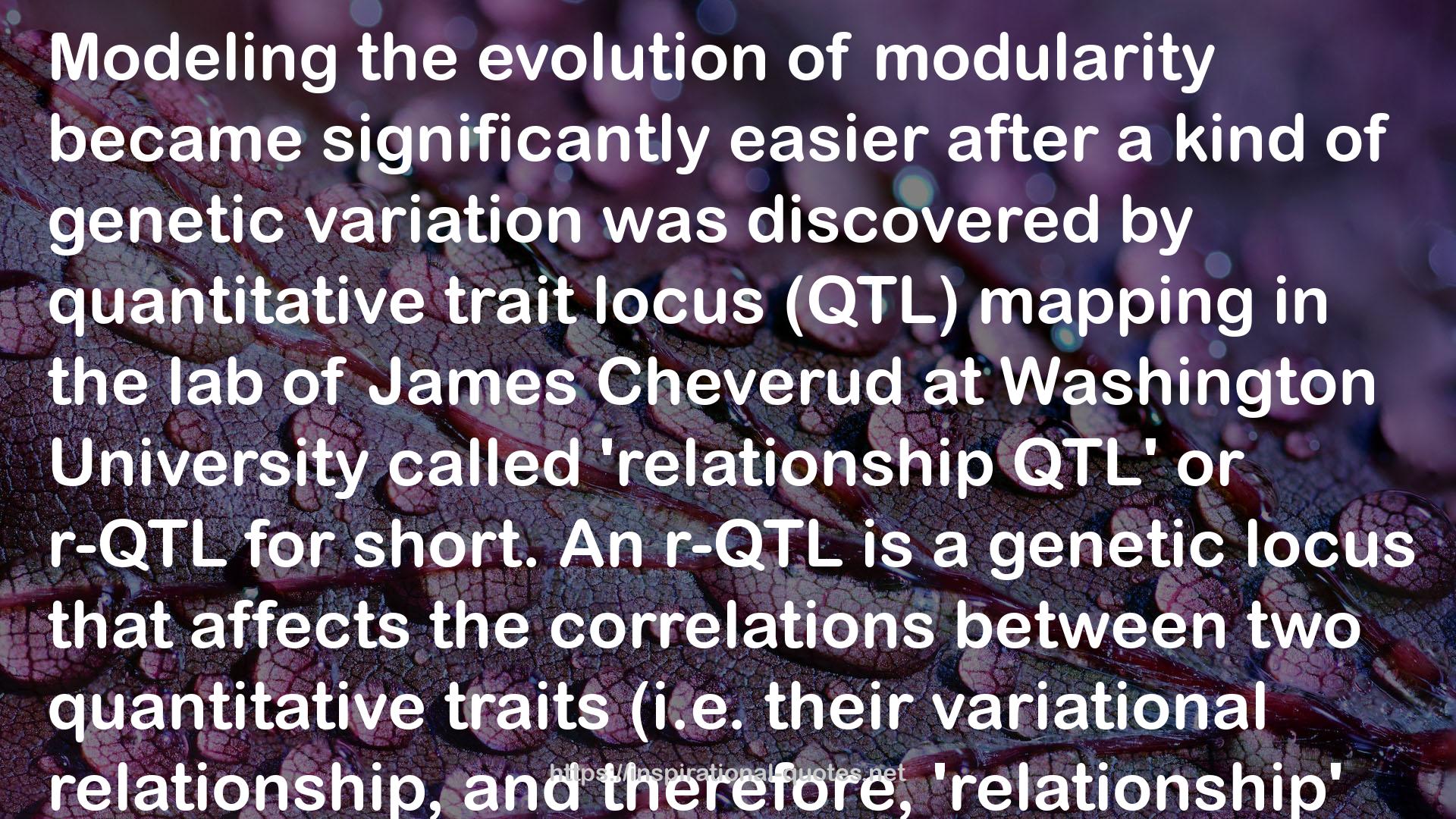" Modeling the evolution of modularity became significantly easier after a kind of genetic variation was discovered by quantitative trait locus (QTL) mapping in the lab of James Cheverud at Washington University called 'relationship QTL' or r-QTL for short. An r-QTL is a genetic locus that affects the correlations between two quantitative traits (i.e. their variational relationship, and therefore, 'relationship' loci). Surprisingly, a large fraction of these so-mapped loci are also neutral with respect to the character mean. This means one can select on these 'neutral' r-QTLs without simultaneously changing the character mean in a certain way.
It was easy to show that differential directional selection on a character could easily lead a decrease in genetic correlation between characters. Of course, it is not guaranteed that each and every population has the right kind of r-QTL polymorphisms, nor is it yet clear what kind of genetic architecture allows for the existence of an r-QTL.
Nevertheless, these findings make it plausible that differential directional selection can enhance the genetic/variational individuality of traits and, thus, may play a role in the origin of evolutionary novelties by selecting for variational individuality.
It must be added, though, that there has been relatively little research in this area and that we will need to see more to determine whether we understand what is going on here, if anything. In particular, one difficulty is the mathematical modeling of gene interaction (epistasis), because the details of an epistasis model determine the outcome of the evolution by natural selection. One result shows that natural selection increases or decreases mutational variance, depending on whether the average epistatic effects are positive or negative. This means that the genetic architecture is more determined by the genetic architecture that we start with than by the nature of the selection forces that act upon it. In other words, the evolution of a genetic architecture could be arbitrary with respect to selection. "
― , Homology, Genes, and Evolutionary Innovation
